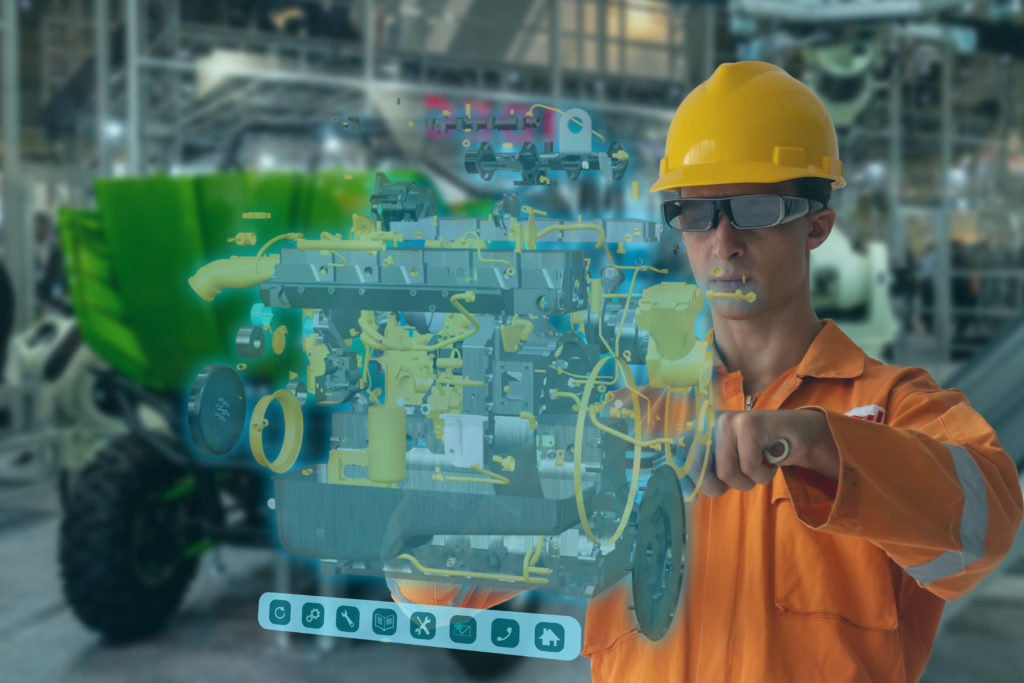5G’s Magic—Powering the 4th Industrial Revolution

If you ever wondered what magic can create a workerless factory, a home that talks to its owners, or a car capable of communicating with other vehicles and pedestrians, 5G is part of that wizardry.
Smart devices characterize the Fourth Industrial Revolution, a topic that continues to be top of mind at .orgSource. My business partner, Kevin Ordonez, and I wrote two books that were inspired by our interest in how digital technologies are reinventing business.
The Fourth Industrial Revolution is characterized by the idea that new technologies such as artificial intelligence, gene editing, and robotics are dissolving barriers. The boundaries between the physical, digital, and biological worlds are vanishing. This phenomenon is creating changes that are significant enough in the way that goods are manufactured and that work and workplaces operate, to define a new era.
Kevin and I frequently write and talk about the skills leaders need to stay ahead of these trends. But we don’t often discuss behind-the-scenes nuts and bolts like 5G. So why should anyone, but a techie, care about the mechanics of digital business?
Know the Possibilities
The first reason to pay attention to the digital backstory is that understanding foundational concepts, even in a superficial way, puts ideas into perspective. The second reason is that keeping up with market trends makes you a stronger strategist. If you need additional convincing, accept that you can’t be an innovator without knowing the possibilities.
The ability to innovate is the slipstream through digital markets. To update your brand to today and deliver tomorrow’s member value, you must be aware of the amazing options. Association CEOs have incredible demands on their time, but understanding the future is not a place to cut corners. Being familiar with opportunities that are currently on the table as well as the solutions that are still in development is the only way to stay ahead of this fast-moving marketplace.
5G is the fifth-generation technology for broadband cellular networks. Using shorter, higher frequency bands of the radio spectrum, 5G is more than a mere upgrade from its previous iteration. Yes, it is currently about 10 times faster than 4G LTE networks, with the potential to become far more powerful. But it is also characterized by the ability to accommodate more bundles of data at once, or high bandwidth, and to process mega data drops in close to real-time or low latency.
Speed, high bandwidth, and low latency are the superpowers that make 5G transformational. Its impact revolves around connectivity, or the ability to create interfaces between unlike receivers such as people, machines, objects, and devices. Linking dissimilar players sparks serial invention. Innovation occurs rapidly on multiple levels and across many disciplines, accounting for the explosion of new technology in healthcare, robotics, agriculture, and other fields.
Discover the Advantages
In 2018, when Hugh Lee, the Owner of Fusion Productions, spoke at .orgCommunity’s Innovation Summit. He asked how many people in the audience knew the story of 5G. No one raised a hand. Then he went on to say–
“Seven months ago, I attended a two-day retreat with a group of CEOs. The topic was 5G. We discussed how it’s going to change their world, how it’s going to change the way their members run their businesses, and how it’s going to change competition and cooperation. It’s a big deal. Since that time 5G is already in 25 cities and is about to roll out in 50 more.

“A good friend of mine is involved in building the next generation of event venues in Las Vegas. It’s called the MGM Sphere. Both the outside and the inside of the structure support high-definition LED media. You could actually view an event by flying over it. Because the audio is all digital you can listen in French, English, Hawaiian, or Chinese. 5G makes all this possible.”
The MGM Sphere, which is billed as the largest spherical structure on Earth and will house 20,000 guests, opens with U2 later this year. If a trip to this technological wonderland is in your future, you’ll be able to experience 5G firsthand.
Do More With Less
On a simpler scale, 5G has significant benefits to offer even small businesses. High speed and low latency mean more computing power with less hardware. This is good news for remote workers. Employees will be able to connect to the cloud, use powerful analytics, and even virtual reality with basic devices. 5G brings the tropics to Zoom and the internet—no more frozen screens or lags in processing. Work can flow quickly without annoying distractions.
Improve Engagement
Video has injected new life into member engagement strategies. But if your amazing clip downloads like cold ketchup, some of that excitement might get lost in the wait. As video becomes the norm rather than the exception, 5G should make the viewing seamless. Downloading is reduced from minutes to seconds. The technology also opens the door for more of us to make the leap to virtual reality.

Virtual reality is probably coming to associations sooner than most professionals imagine. The Virtual Reality/Augmented Reality Association, founded in 2015, already has over 20 chapters and a staff of 140. The organization’s news page contains multiple stories about the value of using VR in education and training.
Falling behind members is a surefire path to irrelevance. Healthcare, engineering, architecture, and fashion businesses, are already implementing virtual strategies. If the industry your group represents is ahead of the virtual curve, this technology should be at the top of your association’s list of priorities.
We are only seeing the tail of the elephant that 5G promises to become. Digital Trends reports that T-Mobile currently has approximately 1 million 5G home internet customers and that the other two largest providers are making similar inroads. Universities, retailers, hospitality clients, and other businesses are jumping on the bandwagon. Research from GMSA predicts that by 2034 5G will have added $565 billion to the global economy.
Eventually, 5G will be the industry standard. Scientists and other researchers anticipate that it will support autonomous cars, healthcare devices, and drones along with an expanding internet of things that includes inventions we can’t currently imagine.
When our homes begin communicating with local services and digital features are tightly woven into the urban infrastructure, 5G will have been the bridge that moved us from the internet of things into smart cities and toward the technology of living.

